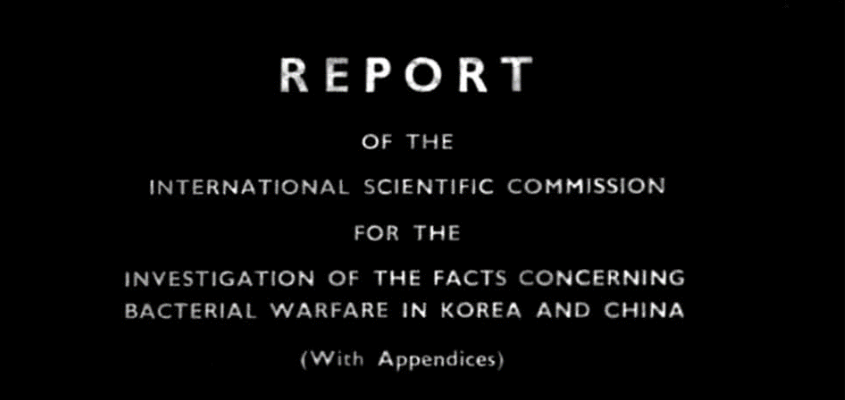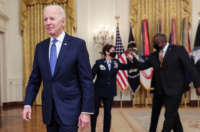
It began more than two decades ago. On September 20, 2001, President George W. Bush declared a “war on terror” and told a joint session of Congress (and the American people) that “the course of this conflict is not known, yet its outcome is certain.” If he meant a 20-year slide to defeat in Afghanistan, a proliferation of militant groups across the Greater Middle East and Africa, and a never-ending, world-spanning war that, at a minimum, has killed about 300 times the number of people murdered in America on 9/11, then give him credit. He was absolutely right.
Days earlier, Congress had authorized Bush “to use all necessary and appropriate force against those nations, organizations, or persons he determine[d] planned, authorized, committed, or aided the terrorist attacks that occurred on September 11, 2001 or harbored such organizations or persons.” By then, it was already evident, as Bush said in his address, that al-Qaeda was responsible for the attacks. But it was equally clear that he had no intention of conducting a limited campaign. “Our war on terror begins with al-Qaeda, but it does not end there,” he announced. “It will not end until every terrorist group of global reach has been found, stopped, and defeated.”
Congress had already assented to whatever the president saw fit to do. It had voted 420 to 1 in the House and 98 to 0 in the Senate to grant an Authorization for Use of Military Force (AUMF) that would give him (and presidents to come) essentially a free hand to make war around the world.
“I believe that it’s broad enough for the president to have the authority to do all that he needs to do to deal with this terrorist attack and threat,” Senate Minority Leader Trent Lott (R-MS) said at the time. “I also think that it is tight enough that the constitutional requirements and limitations are protected.” That AUMF would, however, quickly become a blank check for boundless war.
In the two decades since, that 2001 Authorization for Use of Military Force has been formally invoked to justify counterterrorism (CT) operations — including ground combat, airstrikes, detention, and the support of partner militaries — in 22 countries, according to a new report by Stephanie Savell of Brown University’s Costs of War Project. During that same time, the number of terrorist groups threatening Americans and American interests has, according to the U.S. State Department, more than doubled.
Under that AUMF, U.S. troops have conducted missions across four continents. The countries in question include some of little surprise like Afghanistan, Iraq, and Syria, and a few unexpected nations like Georgia and Kosovo. “In many cases the executive branch inadequately described the full scope of U.S. actions,” writes Savell, noting the regular invocation of vague language, pretzeled logic, and weak explanations. “In other cases, the executive branch reported on ‘support for CT operations,’ but did not acknowledge that troops were or could be involved in hostilities with militants.”
For nearly a year, the Biden administration has conducted a comprehensive evaluation of this country’s counterterrorism policies, while continuing to carry out airstrikes in at least four countries. The 2001 AUMF has, however, already been invoked by Biden to cover an unknown number of military missions in 12 countries: Afghanistan, Cuba, Djibouti, Iraq, Jordan, Kenya, Lebanon, Niger, the Philippines, Somalia, and Yemen.
“A lot is being said about the Biden administration’s rethinking of U.S. counterterrorism strategy, and while it’s true that Biden has conducted substantially less drone strikes so far than his predecessors, which is a positive step,” Savell told TomDispatch, “his invocation of the 2001 AUMF in at least 12 countries indicates that the U.S. will continue its counterterrorism activities in many places. Basically, the U.S. post-9/11 wars continue, even though U.S. troops have formally left Afghanistan.”
AUMFing in Africa
“[W]e are entering into a long twilight struggle against terrorism,” said Representative David Obey (WI), the ranking Democrat on the House Appropriations Committee, on the day that the 2001 AUMF’s fraternal twin, a $40 billion emergency spending bill, was passed. “This bill is a down payment on the efforts of this country to undertake to find and punish those who committed this terrible act and those who supported them.”
If you want to buy a house, a 20% down payment has been the traditional ideal. To buy an endless war on terror in 2001, however, less than 1% was all you needed. Since that initial installment, war costs have increased to about $5.8 trillion.
“This is going to be a very nasty enterprise,” Obey continued. “This is going to be a long fight.” On both counts he was dead on. Twenty-plus years later, according to the Costs of War Project, close to one million people have been killed in direct violence during this country’s ongoing war on terror.
Over those two decades, that AUMF has also been invoked to justify detention operations at Guantánamo Bay, Cuba; efforts at a counterterrorism hub in the African nation of Djibouti to support attacks in Somalia and Yemen; and ground missions or air strikes in Afghanistan, Iraq, Libya, Pakistan, Somalia, Syria, and Yemen. The authorization has also been called on to justify “support” for partner armed forces in 13 countries. The line between “support” and combat can, however, be so thin as to be functionally nonexistent.
In October 2017, after the Islamic State ambushed U.S. troops in Niger — one of the 13 AUMF “support” nations — killing four American soldiers and wounding two others, U.S. Africa Command claimed that those troops were merely providing “advice and assistance” to local counterparts. Later, it was revealed that they had been working with a Nigerien force under the umbrella of Operation Juniper Shield, a wide-ranging counterterrorism effort in northwest Africa. Until bad weather prevented it, in fact, they were slated to support another group of American commandos trying to kill or capture Islamic State leader Doundoun Cheffou as part of an effort known as Obsidian Nomad II.
Obsidian Nomad is, in fact, a 127e program — named for the budgetary authority (section 127e of title 10 of the U.S. Code) that allows Special Operations forces to use select local troops as surrogates in counterterrorism missions. Run either by Joint Special Operations Command, the secretive organization that controls the Navy’s SEAL Team 6, the Army’s Delta Force, and other elite special mission units, or by more generic “theater special operations forces,” its special operators have accompanied local commandos into the field across the African continent in operations indistinguishable from combat.
The U.S. military, for instance, ran a similar 127e counterterrorism effort, codenamed Obsidian Mosaic, in neighboring Mali. As Savell notes, no administration has ever actually cited the 2001 AUMF when it comes to Mali, but both Trump and Biden referred to providing “CT support to African and European partners” in that region. Meanwhile, Savell also notes, investigative journalists “revealed incidents in which U.S. forces engaged not just in support activities in Mali, but in active hostilities in 2015, 2017, and 2018, as well as imminent hostilities via the 127e program in 2019.” And Mali was only one of 13 African nations where U.S. troops saw combat between 2013 and 2017, according to retired Army Brigadier General Don Bolduc, who served at Africa Command and then headed Special Operations Command Africa during those years.
In 2017, the Intercept exposed the torture of prisoners at a Cameroonian military base that was used by U.S. personnel and private contractors for training missions and drone surveillance. That same year, Cameroon was cited for the first time under the 2001 AUMF as part of an effort to “support CT operations.” It was, according to Bolduc, yet another nation where U.S. troops saw combat.
American forces also fought in Kenya at around the same time, said Bolduc, even taking casualties. That country has, in fact, been cited under the AUMF during the Bush, Trump, and Biden administrations. While Biden and Trump acknowledged U.S. troop “deployments” in Kenya in the years from 2017 to 2021 to “support CT operations,” Savell notes that neither made “reference to imminent hostilities through an active 127e program beginning at least in 2017, nor to a combat incident in January 2020, when al Shabaab militants attacked a U.S. military base in Manda Bay, Kenya, and killed three Americans, one Army soldier and two Pentagon contractors.”
In addition to cataloging the ways in which that 2001 AUMF has been used, Savell’s report sheds light on glaring inconsistencies in the justifications for doing so, as well as in which nations the AUMF has been invoked and why. Few war-on-terror watchers would, for example, be shocked to see Libya on the list of countries where the authorization was used to justify air strikes or ground operations. They might, however, be surprised by the dates cited, as it was only invoked to cover military operations in 2013, and then from 2015 to 2019.
In 2011, however, during Operation Odyssey Dawn and the NATO mission that succeeded it, Operation Unified Protector (OUP), the U.S. military and eight other air forces flew sorties against the military of then-Libyan autocrat Muammar Gaddafi, leading to his death and the end of his regime. Altogether, NATO reportedly conducted around 9,700 strike sorties and dropped more than 7,700 precision-guided munitions.
Between March and October of 2011, in fact, U.S. drones flying from Italy regularly stalked the skies above Libya. “Our Predators shot 243 Hellfire missiles in the six months of OUP, over 20 percent of the total of all Hellfires expended in the 14 years of the system’s deployment,” retired Lieutenant Colonel Gary Peppers, the commander of the 324th Expeditionary Reconnaissance Squadron during Operation Unified Protector, told the Intercept in 2018. Despite those hundreds of drone strikes, not to mention attacks by manned aircraft, the Obama administration argued, as Savell notes, that the attacks did not constitute “hostilities” and so did not require AUMF citation.
The War for Terror?
In the wake of 9/11, 90% of Americans were braying for war. Representative Jerrold Nadler (D-NY) was one of them. “[W]e must prosecute the war that has been thrust upon us with resolve, with fortitude, with unity, until the evil terrorist groups that are waging war against our country are eradicated from the face of the Earth,” he said. More than 20 years later, al-Qaeda still exists, its affiliates have multiplied, and harsher and deadlier ideological successors have emerged on multiple continents.
As both political parties rushed the United States into a “forever war” that globalized the death and suffering al-Qaeda meted out on 9/11, only Representative Barbara Lee (D-CA) stood up to urge restraint. “Our country is in a state of mourning,” she explained. “Some of us must say, ‘Let’s step back for a moment, let’s just pause, just for a minute, and think through the implications of our actions today, so that this does not spiral out of control.’”
While the United States was defeated in Afghanistan last year, the war on terror continues to spiral elsewhere around world. Last month, in fact, President Biden informed Congress that the U.S. military “continues to work with partners around the globe, with a particular focus” on Africa and the Middle East, and “has deployed forces to conduct counterterrorism operations and to advise, assist, and accompany security forces of select foreign partners on counterterrorism operations.”
In his letter, Biden acknowledged that troops continue detention operations at Guantánamo Bay, Cuba, and support counterterrorism operations by the armed forces of the Philippines. He also assured Congress and the American people that the United States “remains postured to address threats” in Afghanistan; continues its ground missions and air strikes in Iraq and Syria; has forces “deployed to Yemen to conduct operations against al Qaeda in the Arabian Peninsula and ISIS”; others in Turkey “to support Counter-ISIS operations”; around 90 troops deployed to Lebanon “to enhance the government’s counterterrorism capabilities”; and has sent more than 2,100 troops to “the Kingdom of Saudi Arabia to protect United States forces and interests in the region against hostile action by Iran and Iran-backed groups,” as well as approximately 3,150 personnel to Jordan “to support Counter-ISIS operations, to enhance Jordan’s security, and to promote regional stability.”
In Africa, Biden noted, U.S. forces “based outside Somalia continue to counter the terrorist threat posed by ISIS and al-Shabaab, an associated force of al Qaeda” through air strikes and assistance to Somali partners and are deployed to Kenya to support counterterrorism operations. They also remain deployed in Djibouti “for purposes of staging for counterterrorism and counter-piracy operations,” while in the Lake Chad Basin and the Sahel, U.S. troops “conduct airborne intelligence, surveillance, and reconnaissance operations” and advise, assist, and accompany local forces on counterterrorism missions.
Just days after Biden sent that letter to Congress, Secretary of State Antony Blinken announced the release of an annual counterterrorism report that also served as a useful assessment of more than 20 years of AUMF-fueled counterterror operations. Blinken pointed to the “spread of ISIS branches and networks and al-Qaeda affiliates, particularly in Africa,” while noting that “the number of terrorist attacks and the overall number of fatalities resulting from those attacks increased by more than 10 percent in 2020 compared with 2019.” The report, itself, was even bleaker. It noted that “ISIS-affiliated groups increased the volume and lethality of their attacks across West Africa, the Sahel, the Lake Chad Basin, and northern Mozambique,” while al-Qaeda “further bolstered its presence” in the Middle East and Africa. The “terrorism threat,” it added, “has become more geographically dispersed in regions around the world” while “terrorist groups remained a persistent and pervasive threat worldwide.” Worse than any qualitative assessment, however, was the quantitative report card that it offered.
The State Department had counted 32 foreign terrorist organizations scattered around the world when the 2001 AUMF was passed.. Twenty years of war, around six trillion dollars, and nearly one million corpses later, the number of terrorist groups, according to that congressionally mandated report, stands at 69.
With the passage of that AUMF, George W. Bush declared that America’s war would “not end until every terrorist group of global reach has been found, stopped, and defeated.” Yet after 20 years, four presidents, and invocations of the AUMF in 22 countries, the number of terrorist groups that “threaten the security of U.S. nationals or the national security” has more than doubled.
“The 2001 AUMF is like a blank check that U.S. presidents have used to conduct military violence in an ever-expanding number of operations in any number of places, without adequate oversight from Congress. But it’s also just the tip of the iceberg,” Savell told TomDispatch. “To truly end U.S. war violence in the name of counterterrorism, repealing the 2001 AUMF is the first step, but much more needs to be done to push for government accountability on more secretive authorities and military programs.”
When Congress gave Bush that blank check — now worth $5.8 trillion and counting — he said that the outcome of the war on terror was already “certain.” Twenty years later, it’s a certainty that the president and Congress, Representative Barbara Lee aside, had it all wrong.
As 2022 begins, the Biden administration has an opportunity to end a decades-long mistake by backing efforts to replace, sunset, or repeal that 2001 AUMF — or Congress could step up and do so on its own. Until then, however, that same blank check remains in effect, while the tab for the war on terror, as well as its AUMF-fueled toll in human lives, continues to rise.
This post was originally published on Latest – Truthout.

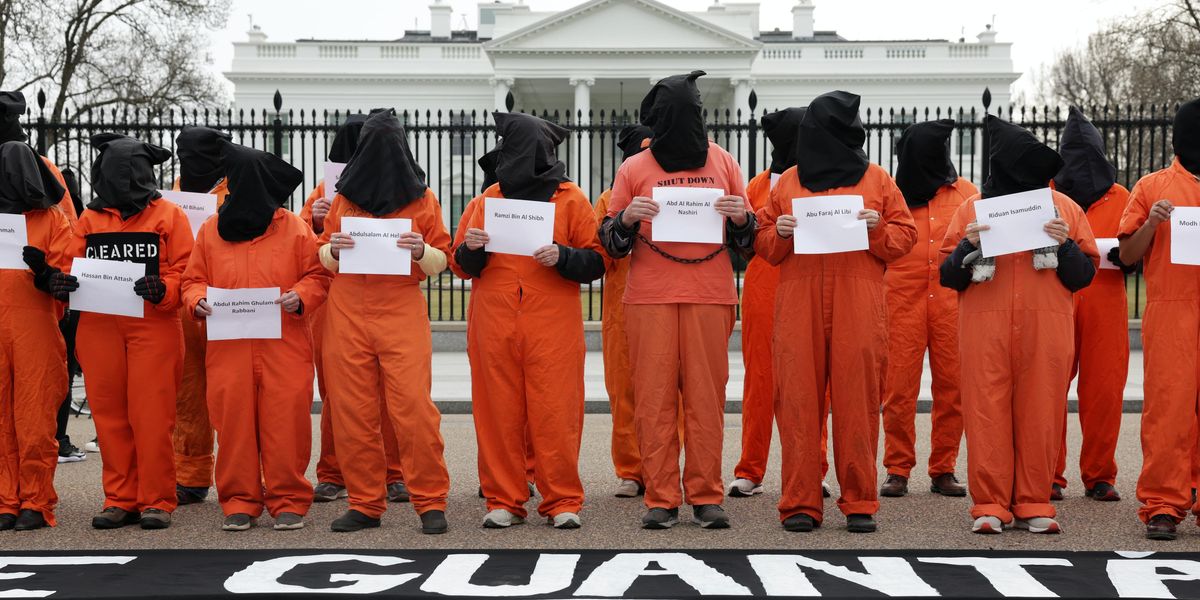
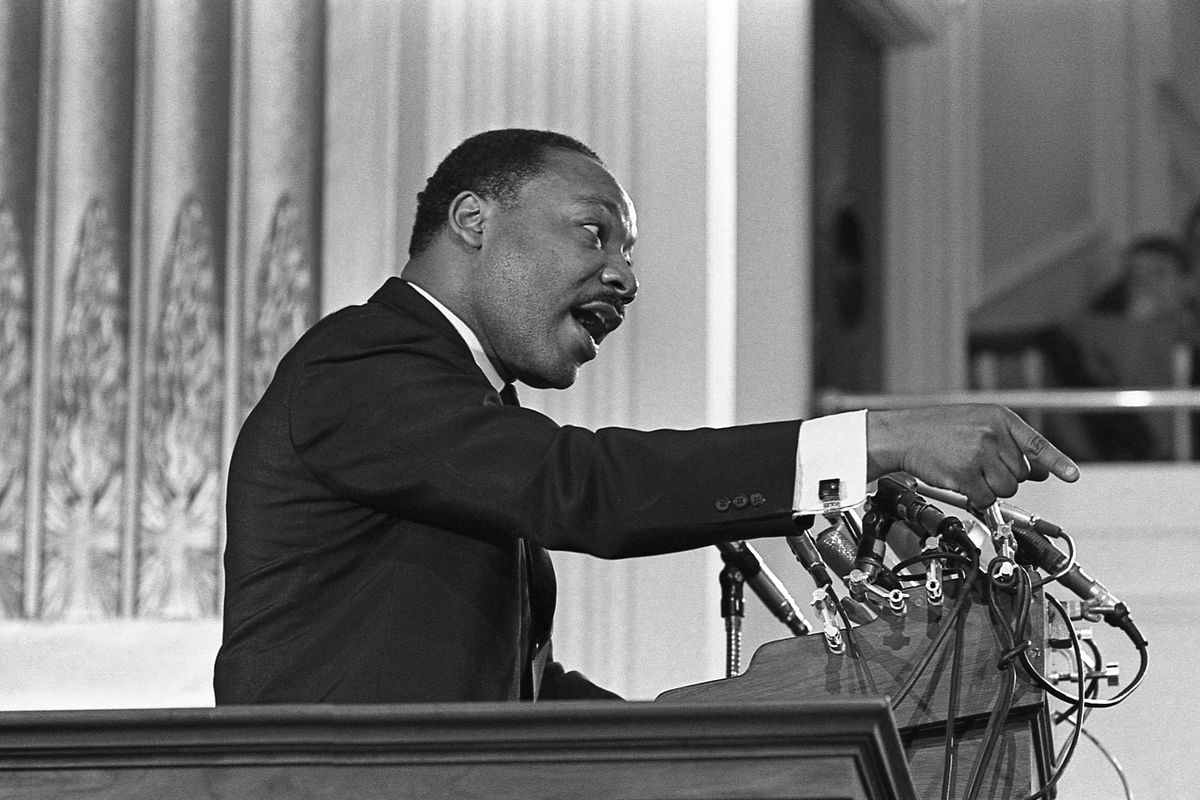


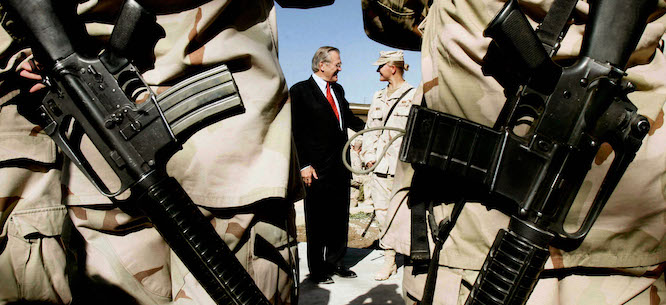

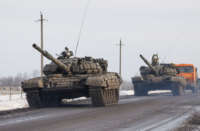


:max_bytes(150000):strip_icc():format(webp)/illustration-to-the-divine-comedy-by-dante-alighieri--abyss-of-hell---1480-1490--found-in-the-collection-of-the-biblioteca-apostolica-vaticana--486777773-5c3a03c246e0fb00016261f2.jpg)

